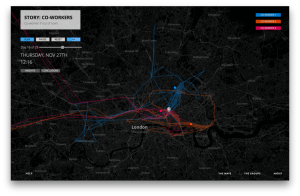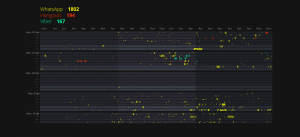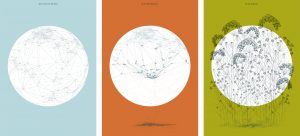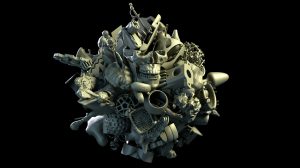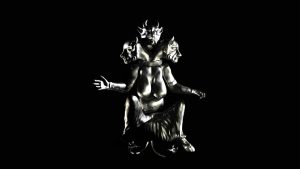I listened to the lecture given by Kate Hollenbach, who works at Oblong. She is a media programmer and artist based in Los Angeles. She works with interactive media and systems involving gesture and space. I appreciate that she is both involved in art and programming, because that’s something I have not explored before taking this course.
She discussed how their group works with gestural and spatial interactions in products and installations. I find it so interesting and inspiring that we are at a point where we can manipulate displays and interact with them, simply through gesture. I think it adds an interesting dimension to how people interact with the visuals they’re looking at- whether it’s video or pictures. It makes you involve your body’s behavior more thoroughly, I think, than the action of swiping through screens with your fingers does. It also creatively reimagines how designers can change the relationship between the user, the product, and their environment, and how the user can be enjoyably immersed in their experience.
Hollenbach presented Oblong’s projects by showing people actively experiencing their products. They also addressed what value their projects could add to the users’ experiences. I appreciate that she talked about how people harbor fear about their projects, and that part of their objective is to get people to trust the interfaces and systems they’re interacting with.
I liked the pointer they they produced because it has subtle differences from an average pointer, yet has a lot of personality as a result of their efforts to make it feel organic and responsive. The little movements of the pointer and the responsive nature makes it feel fun and endearing. It’s not something that moves the world, but it is delightfully designed. It’s in the video below.
INSTINT 2014 – Kate Hollenbach from Eyeo Festival // INSTINT on Vimeo.
http://www.katehollenbach.com/
![[OLD FALL 2017] 15-104 • Introduction to Computing for Creative Practice](../../../../wp-content/uploads/2020/08/stop-banner.png)
